Movies Visual

What role does cinematography play in making sports movies engaging ?
Cinematography plays a crucial role in making sports movies engaging by capturing the essence of athleticism and the drama of competition. Through the use of various filmmaking techniques, cinematographers can bring the excitement and emotions of sports to life on the screen. Here are some ways in which cinematography contributes to the appeal of sports movies: 1. Dynamic Camera Movement - Tracking shots, crane shots, and handheld shots create a sense of speed and momentum, reveal the scale of stadiums and crowds, and create an intimate, immersive experience for the viewer. 2. Creative Angles and Perspectives - Low angles make athletes appear powerful and dominant, high angles show the vulnerability or isolation of a character within a vast arena, and point-of-view shots allow the audience to see what the athlete sees, enhancing their connection to the action. 3. Lighting and Color - Contrast and shadows highlight the physicality of sport and the intensity of effort, color grading is used to convey mood, team identity, or historical eras, and backlighting creates a dramatic effect around athletes, often used in climactic moments. 4. Slow Motion and Fast Motion - Slow motion extends key moments to emphasize grace, power, or impact, while fast motion compresses time to show training sequences or build anticipation. 5. Special Effects and Visual Effects (VFX) - Chromakeying isolates athletes against different backgrounds for creative storytelling, CGI recreates historical events or enhances visually complex sports like underwater scenes, and compositing combines multiple layers of footage for dynamic scenes that couldn't be captured live. 6. Sound Design - Audio effects synch sound effects with visuals to heighten the impact of movements, and musical score supports the visuals, enhancing tension or celebration. 7. Editing Pace - Quick cuts build excitement during high-intensity moments, while long takes sustain tension during crucial plays or showcase skillful execution. 8. Storytelling through Visuals - Symbolic images use iconic sports imagery to tell stories without dialogue, and composition arranges elements within the frame to guide the audience's focus. 9. Emotional Engagement - Close-ups show facial expressions and reactions, drawing viewers into the emotional state of athletes, and environmental interaction captures interactions between athletes and their surroundings, like skimming fingers on a track or splashes in a pool. 10. Juxtaposition and Montage - Narrative montage tells backstory or parallel plotlines through a series of short, thematically connected shots, while contrast montage compares different worlds or states of mind by cutting between contrasting scenes. In summary, cinematography is not just a tool for aesthetic enhancement in sports movies; it is a language that translates the physicality, emotion, and narrative of sports into a compelling visual experience. By masterfully employing these techniques, filmmakers can transform a simple game into an unforgettable cinematic journey.

What is the most popular sport in Hollywood movies ?
Boxing, basketball, football, and baseball are among the most popular sports depicted in Hollywood movies. These films often explore themes of perseverance, determination, teamwork, and redemption, making for compelling storytelling.

Can watching sports movies improve your athletic performance ?
**Can Watching Sports Movies Improve Your Athletic Performance?** *Watching sports movies can provide motivation, teach techniques, and emphasize the importance of sportsmanship and teamwork. While they won't directly enhance performance, they can inspire consistent practice and hard work.*
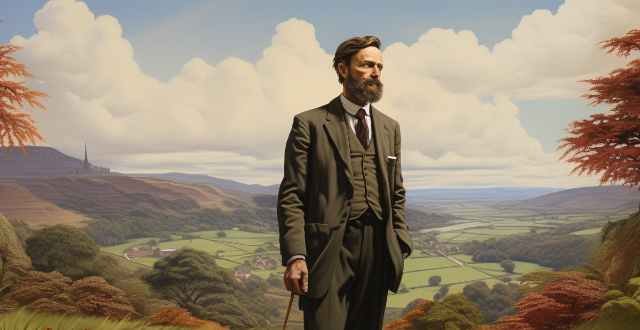
How do sports movies influence young athletes ?
Sports movies have a significant impact on young athletes, providing motivation, inspiration, and valuable life lessons. They showcase role models who have overcome obstacles, teach the importance of perseverance and resilience, highlight teamwork and leadership, and emphasize dedication and sacrifice. These films also explore mental toughness, enjoyment of the process, and cultural impact while incorporating life lessons such as humility, respect, and integrity. However, it's important for young athletes to be aware that sports movies often present an idealized version of reality and should draw inspiration from these stories while understanding the challenges and setbacks of real-life sports.
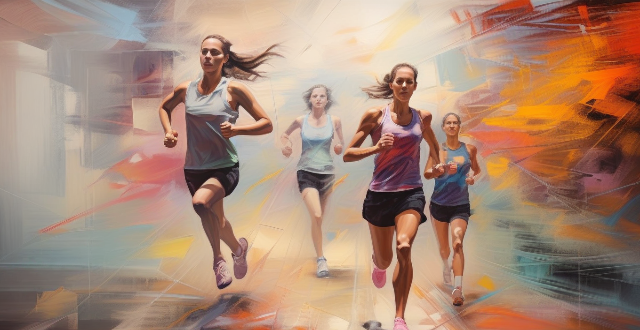
What are some of the best sports movies for children ?
Sports movies can inspire children to be active, learn teamwork, and develop a love for sports. Here are some of the best sports movies for children: The Sandlot (1993), Miracle (2004), Cool Runnings (1993), Remember the Titans (2000), The Blind Side (2009), A League of Their Own (1992), Coach Carter (2005), The Bad News Bears (1976), Space Jam (1996), Million Dollar Arm (2014).

What is the impact of sports movies on the sports industry ?
Sports movies have a significant impact on the sports industry by inspiring and motivating people, promoting healthy lifestyles, generating interest in different sports, and providing marketing and branding opportunities. These movies can encourage people to pursue their dreams, work hard, and never give up, as well as highlight the importance of physical fitness and healthy living. Additionally, sports movies can generate interest in less popular or well-known sports and provide excellent marketing and branding opportunities for companies involved in the sports industry. Overall, sports movies play an essential role in shaping public perception and attitudes towards sports and physical activity.
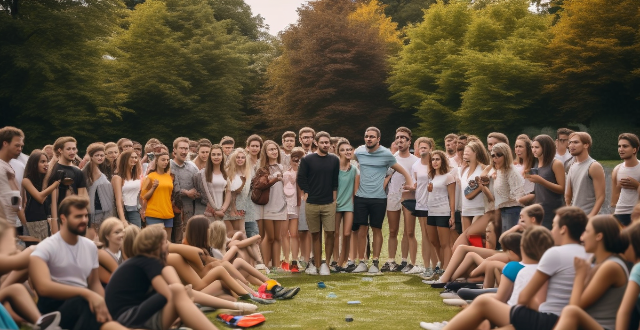
How do sports movies impact the popularity of a particular sport ?
Sports movies can impact the popularity of a particular sport through storytelling, celebrity endorsement, increased visibility, and inspiration/motivation. These films can create an emotional connection between the audience and the sport, bring attention to it through famous actors/actresses, make it more visible to a wider audience, and inspire/motivate those already involved in the sport.

How do sports movies contribute to the overall popularity of a sport ?
How do sports movies contribute to the popularity of a sport? 1. Increased Awareness: Sports movies bring attention to the sport and its athletes, leading to more people participating in the sport. 2. Inspiration and Motivation: Inspiring stories of athletes overcoming obstacles can motivate viewers to pursue their own athletic goals or try a new sport. 3. Cultural Impact: Sports movies can shape public perceptions of certain sports and make them more socially acceptable or desirable. 4. Economic Benefits: Popular sports movies can generate interest in purchasing related merchandise, attending live events, or watching televised games, leading to higher revenues for teams, leagues, and sponsors involved in the sport. 5. Entertainment Value: Sports movies provide an enjoyable viewing experience that appeals to a wide audience, attracting new fans to the sport and helping maintain its popularity over time.
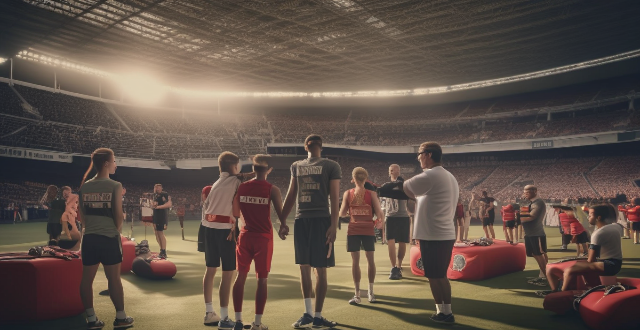
How do sports movies contribute to the overall perception and culture of sports ?
Sports movies have a significant impact on sports culture by inspiring and motivating people to engage in physical activities, promoting sportsmanship values, providing entertainment value, and serving as educational tools. They showcase the dedication and perseverance required for success in sports, often through the journey of an underdog overcoming challenges. These films also promote teamwork, fair play, and respect for opponents, highlighting the importance of sports in society and their ability to unite diverse communities. Additionally, sports movies are highly entertaining, featuring thrilling action sequences, intense competition, and compelling characters that captivate audiences. Finally, they can teach viewers about the history, rules, and techniques of various sports, enhancing knowledge and appreciation for these activities. Overall, sports movies contribute significantly to shaping our perception of athletics and encouraging participation in sports.

In what ways do sports movies often misrepresent or glorify athletic competition ?
Sports movies often misrepresent or glorify athletic competition in several ways, including overemphasis on individual achievement, ignoring injuries and pain, glorifying violence, setting unrealistic expectations, and lack of diversity. While sports movies can be entertaining and inspiring, it is important to remember that they often present an idealized version of athletic competition that does not always reflect reality.

How do sports movies reflect societal attitudes towards health and fitness ?
Sports movies often reflect societal attitudes towards health and fitness, showcasing themes of motivation, teamwork, overcoming adversity, health awareness, and gender equality. These films can inspire viewers to push their limits, work together, persevere through challenges, prioritize their well-being, and support gender equality in sports.

How do sports movies affect the recruitment and retention of young athletes in various sports ?
Sports movies have a significant impact on the recruitment and retention of young athletes in various sports. They inspire young people to take up sports, provide role models for them to look up to, and expose them to new sports they may not have considered before. Sports movies also help retain young athletes by providing motivation during tough times, building a sense of community among athletes, and helping them set goals for themselves. As such, sports movies should be considered an important tool for promoting youth sports participation and development.

What are some of the most memorable moments in sports movies ?
Sports movies often showcase the triumphs and struggles of athletes, capturing our hearts and inspiring us to be our best selves. Here are some of the most memorable moments in sports movies: 1. The Miracle on Ice (Miracle, 2004) - Herb Brooks coaching the 1980 U.S. men's Olympic hockey team to victory over the Soviet Union during the Cold War. 2. Rocky Balboa's Victory (Rocky, 1976) - Sylvester Stallone stars as an underdog boxer who gets a chance to fight for the world heavyweight championship. 3. The Blind Side (The Blind Side, 2009) - Sandra Bullock stars as Leigh Anne Tuohy, who adopts Michael Oher, a homeless teenager with a troubled past, and helps him become a successful football player. 4. Remember the Titans (Remember the Titans, 2000) - Denzel Washington stars as Herman Boone, an African American coach tasked with integrating a newly formed high school football team in Virginia during the civil rights era. 5. Hoosiers (Hoosiers, 1986) - Gene Hackman stars as Norman Dale, a basketball coach who takes on the challenge of leading a small-town Indiana high school team to victory in the state championship.

How does sports influence art expression ?
The text discusses how sports have influenced art expression throughout history and across various mediums. It outlines the impact of sports on visual arts, literature, music, dance, and fashion. The visual arts section includes sculpture, painting, photography, digital art, and motion graphics. The literature section covers sports literature, poetry, and ekphrastic poetry. The music section discusses national anthems, fight songs, pop culture, and hip hop culture. The dance and performance art section covers contemporary dance and performance art. Finally, the fashion section includes sportswear design and high-fashion collaborations. Overall, the text emphasizes the diverse and profound influence of sports on art expression.
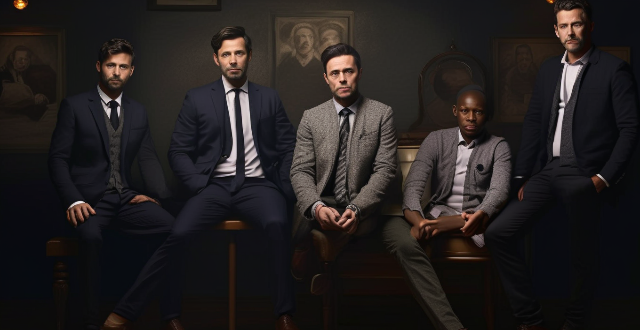
How do sports movies inspire people to pursue their dreams ?
Sports movies inspire people to pursue their dreams by showcasing compelling storytelling, relatable characters, overcoming obstacles, and celebrating achievement. These films serve as a source of inspiration for viewers to believe in themselves and strive for success in their own lives.

How do sports movies portray the importance of teamwork and perseverance ?
Sports movies effectively portray the importance of teamwork and perseverance by showcasing characters who embody these qualities. Through shared goals, diverse skillsets, open communication, sacrifice, resilience, grit, learning from failure, mental toughness, and never giving up, these films inspire audiences to recognize the power of working together and persisting in pursuit of their dreams.

What are the benefits and drawbacks of using visual aids in climate science communication ?
Visual aids in climate science communication can enhance comprehension, engagement, and universal appeal but may oversimplify data or mislead if not accurately designed. Creators must balance benefits and drawbacks for effective communication.

What are some of the best sports movies of all time ?
The text enlists some of the best sports movies of all time, including "Rocky", "Hoosiers", "Remember the Titans", "Miracle", and "The Blind Side". These films not only provide entertainment but also serve as inspirational tales that resonate with audiences worldwide by highlighting the human spirit, perseverance, teamwork, and the thrill and excitement of the game.

What are some of the most successful sports movies of all time ?
Sports movies have always been a popular genre in the film industry. They are not only entertaining but also inspiring and motivational. Here are some of the most successful sports movies of all time: 1. Rocky (1976) 2. The Blind Side (2009) 3. Remember the Titans (2000) 4. Miracle (2004) 5. Moneyball (2011)

How does mind mapping compare to other brainstorming techniques ?
The text discusses the differences between mind mapping and other brainstorming techniques such as free writing, brainstorming sessions, and sketching. Mind mapping is a visual technique that involves creating a diagram to organize information, while free writing involves writing down ideas without any particular structure or organization. Brainstorming sessions typically involve a group of people working together to generate ideas, while sketching offers more freedom in terms of visual expression and experimentation. The author concludes that mind mapping offers a unique approach to brainstorming that combines structure, visualization, and flexibility, making it particularly effective for those who prefer a visual and organized method of generating and organizing ideas.

What are some ways to improve memory retention when studying ?
Improving memory retention is crucial for effective studying. Here are some ways to enhance your memory retention: 1. Create a conducive study environment by minimizing distractions, choosing comfortable seating, and ensuring adequate lighting. 2. Utilize active learning techniques such as engaging in active reading, teaching the material to others, and using visual aids. 3. Practice spaced repetition by distributing study sessions over time, reviewing regularly, and using flashcards. 4. Incorporate mnemonic devices like acronyms and acrostics, visual imagery, rhymes, and songs to make information more memorable. 5. Stay physically and mentally healthy by getting enough sleep, exercising regularly, and eating a balanced diet.

How can I make drinks look more appealing with garnishes ?
Garnishing drinks is an art form that can elevate the visual appeal of your beverages. It not only enhances the aesthetic but also adds flavor and aroma to your drink. In this guide, we will explore various techniques and ideas to make your drinks look more appealing with garnishes. Importance of Garnishes: Garnishes add visual appeal, enhance flavor and aroma, and create theme and ambiance. Garnish Ideas: Fruit garnishes like slices and wedges, herb garnishes like sprigs and leafy toppers, spice garnishes like cinnamon sticks and star anise, edible flowers such as pansy or viola, and miscellaneous garnishes like cocktail picks and salt rims. Techniques for Applying Garnishes: Rim treatments like wet rims and layered effects, floating garnishes like fruit slices and edible flowers, and skewered garnishes like combination skewers and visual balance. By incorporating various types of garnishes and employing different techniques, you can significantly enhance the visual appeal of your drinks. Remember to consider factors such as color, texture, and flavor when selecting garnishes to create a cohesive and attractive presentation. With these tips, you'll be able to elevate any beverage from ordinary to extraordinary in no time!

How are virtual reality and augmented reality changing the way we experience entertainment ?
Virtual reality and augmented reality technologies are revolutionizing entertainment by offering immersive, interactive, and personalized experiences. They have impacted various domains of entertainment, including gaming, movies, sports, and music. VR headsets provide an immersive gaming experience, while AR games bring gaming into the real world. VR cinema offers an immersive movie-watching experience, and AR applications enhance the viewing experience by adding virtual elements to the real world. Sports fans can enjoy a more immersive experience with VR platforms and AR applications that display real-time statistics and replays. Virtual concerts and AR-enhanced performances offer unique and personalized music experiences. Overall, these technologies make entertainment more engaging and enjoyable than ever before.

What are the most effective language learning strategies ?
Effective Language Learning Strategies: Immersion, Consistency, Active Use, Feedback, Visualization, Contextualization, Repetition, Engagement, and Goal Setting.

How can I make history more interesting and engaging to learn ?
To make history more interesting and engaging to learn, consider storytelling techniques, incorporating multimedia, connecting historical events to the present, encouraging critical thinking, engaging in hands-on learning, and personalizing the learning process. These strategies can help transform history from a monotonous subject into a vibrant and captivating area of study.

How can I find out about upcoming movie premieres ?
Finding out about upcoming movie premieres can be an exciting endeavor for film enthusiasts. Here's a summary of the different methods you can use to stay in the know: 1. **Check Movie Websites and Apps**: Platforms like IMDb, Rotten Tomatoes, and Fandango provide comprehensive information on new releases, including trailers and release dates. 2. **Follow Social Media**: Keep tabs on official movie studio accounts and influential film critics or bloggers on platforms like Twitter, Facebook, and Instagram for timely updates. 3. **Sign Up for Newsletters**: Subscribe to newsletters from movie theater chains and movie news websites to receive regular updates on new releases and special events. 4. **Use Streaming Service Alerts**: Stay tuned to announcements from streaming services like Netflix, Hulu, and Amazon Prime regarding premieres of their original content. 5. **Attend Film Festivals**: If possible, attending prestigious film festivals such as Cannes, Sundance, or TIFF can offer a first look at upcoming movies and world premieres. 6. **Check Local Newspapers and Magazines**: The entertainment sections of local newspapers and magazines often list current and upcoming movies, providing a more traditional method of staying informed. 7. **Join Movie Fan Forums and Groups**: Engaging with fellow movie fans on platforms like Reddit, Quora, or Facebook groups allows for discussions and shared excitement over anticipated releases. By utilizing these various methods, you can ensure that you're always among the first to know about upcoming movie premieres and never miss out on the films you're most excited about.

What kind of amenities do celebrity mansions typically have ?
Celebrity mansions are known for their luxurious amenities, ranging from basic necessities to extravagant luxuries. These amenities include swimming pools (indoor, outdoor, heated, infinity, and lap), gyms and fitness centers with state-of-the-art equipment and personal trainers, home theaters with screening rooms and surround sound systems, garages and car museums with multiple bays and climate control, spa facilities with Jacuzzis and saunas, outdoor entertainment areas with BBQ pits and sports courts, and smart home technology with centralized control systems and advanced security.

What are some tips for learning a language through immersion ?
Immersion is an effective method to learn a new language. It involves surrounding oneself with the language and culture, forcing use of new skills in real-life situations. Tips include starting slowly, finding a language partner, watching TV shows and movies in the target language, reading books and newspapers, using technology, attending classes or workshops, and traveling to a country where the language is spoken. Learning a language through immersion requires dedication and patience but can be rewarding.

How can I improve my vocabulary in a new language ?
Improving your vocabulary is essential for fluency and understanding when learning a new language. Some tips include reading extensively, watching TV shows and movies in the target language, using flashcards, practicing with native speakers, and keeping a vocabulary journal. Consistency and patience are key, as well as not being afraid to make mistakes.